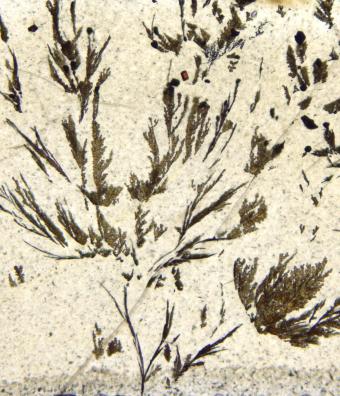Mines research team develops new model for gold deposition in low-sulfidation epithermal deposits
Findings from the study, conducted by researchers at the Center to Advance the Science of Exploration to Reclamation in Mining, were recently published in the journal Geology

A research team at Colorado School of Mines has proposed a new model for the deposition of gold in low-sulfidation epithermal deposits, one of the most important sources of this precious metal in the United States.
Low-sulfidation epithermal deposits are formed by subaerial geothermal systems within the shallow subsurface, commonly within hundreds of meters of the surface. The processes by which the gold deposition takes place have been subject to debate for decades, especially given that these deposits are known to form from dilute geothermal liquids that contain only trace amounts of gold.
The new study demonstrates that gold in high-grade veins from the McLaughlin deposit in California formed as dendritic aggregates in bands originally consisting of gel-like noncrystalline silica. The gel provided a framework for the delicate gold dendrites to form and had a high permeability allowing the diffusion and advection of gold from the geothermal liquids flowing across the top of the silica layers to the sites of crystal growth within the gel. Over time, the gel hardened and the thermodynamically unstable noncrystalline silica recrystallized to the quartz that makes up the bulk of the banded veins today.
The findings were recently published in top geoscience journal Geology.
“For decades, the economic geology community has struggled to understand how gold deposition occurs from dilute geothermal liquids,” said first author Thomas Monecke, professor of economic geology in the Department of Geology and Geological Engineering at Mines and Director of the Center to Advance the Science of Exploration to Reclamation in Mining (CASERM). “Our study demonstrates that metal deposition in low-sulfidation epithermal deposits takes place during short-lived events of fluid flashing whereas no significant metal deposition occurs during buoyancy driven fluid flow that occurs over prolonged periods of time under quasi steady-state conditions.”
The research on low-sulfidation epithermal deposits was conducted by CASERM, a collaborative research venture between Mines and Virginia Tech that is supported by a consortium of mining companies and federal agencies aiming to transform the way geoscience data is used across the mining value chain. CASERM forms part of the Industry-University Collaborative Research Center program of the National Science Foundation.
These deposits, which often comprise banded quartz veins that contain high precious metal grades, are typically extracted through open pit or underground mining. In the study, the authors related the deposition of silica and gold in the deposits to the vaporization of the geothermal liquids associated with hydrothermal eruptions.
“Studying samples from the geologically young McLaughlin deposit in California provided us with a unique opportunity to understand the processes of mineral deposition in this deposit type,” said T. James Reynolds, affiliate faculty in the Department of Geology and Geological Engineering at Mines. “Although many parallels exist with geothermal systems worldwide, this part of the puzzle was not well understood as geothermal developments are engineered to minimize mineral deposition in geothermal wells.”
Additional co-authors include current and former Mines graduate students Tadsuda Taksavasu, Lauren Zeeck, Mario Guzman and Garrett Gissler. Erik Tharalson, postdoctoral fellow in the Department of Geology and Geological Engineering at Mines, and Ross Sherlock, Chair in Exploration Targeting and Director of the Mineral Exploration Research Centre at Laurentian University in Sudbury, Canada, also contributed to the study.
Read the full study, "Natural growth of gold dendrites within silica gels" at https://doi.org/10.1130/G48927.1.




